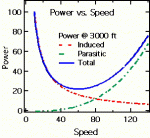scandtours
scandtours
With just a c
With just a couple of lines, Mr Beaty, you've managed cover everything regarding Genesis handling qualities, including engine/prop torque stability.
It is as if you have flown Genesis. Did You?
It is important to understand that many lesser gyos would not have survived the maneuvers demonstrated by Nicolas on his Genesis and would have ended up in the bottom of smoking holes. Particularly full power climbs followed by a pushover.
That’s the advantage of a technically correct, properly engineered design.
CLT is only the beginning. Horizontal tailplanes set in the propeller slipstream with differential incidence to balance propeller torque prevent “torqueover” during periods at full power with reduced rotor thrust and low airspeed.
Those design features that contribute to safety also provide superior handling qualities.
It’s about time we had engineered designs rather by-guess-and-by-gosh scaled up Bensens.
With just a couple of lines, Mr Beaty, you've managed cover everything regarding Genesis handling qualities, including engine/prop torque stability.
It is as if you have flown Genesis. Did You?
Last edited:


